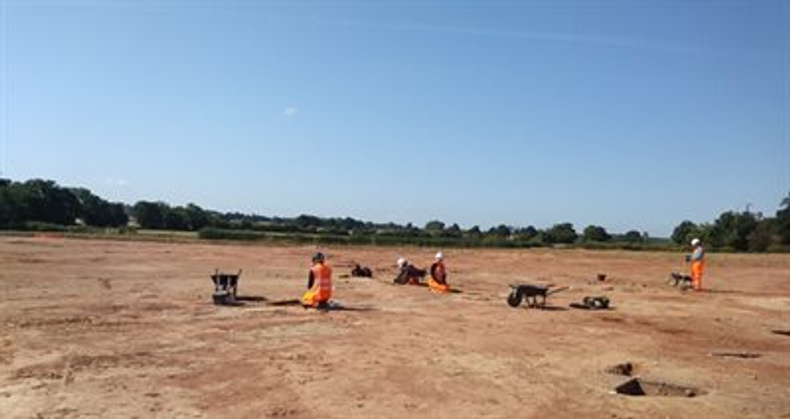Staffordshire's archaeologists help uncover thousands of years of hidden history

Staffordshire County Council is celebrating the work of its Historic Environment Team, as part of the national Festival of Archaeology, happening from 19 July to 3 August.
Staffordshire’s dedicated team of archaeologists has supported and led on a wide range of archaeological discoveries over the years, which have reshaped the public’s understanding of the county’s past.
Major projects the team have been involved in include supporting the recovery of the Staffordshire Hoard - the largest collection of Anglo-Saxon gold and silver ever discovered.
They also played a key role in the acclaimed Chase Through Time project, which explored more than 2,000 years of history on Cannock Chase.
This project uncovered First World War training camps, as well as remains from historic coal mining, ironworking and glassmaking industries.
In addition, the team has been closely involved in the Transforming the Trent Valley project and is now helping to develop its sister initiative, Transforming the Trent Headwaters.
Both projects, led by Staffordshire Wildlife Trust, help to tell the evolving story of Staffordshire’s landscape and its people.
Shane Kelleher, Staffordshire County Council’s county archaeologist, said: “My small team and I spend a lot our time at our desks looking at planning applications, reports and digital maps.
“However, all of that time behind a screen is all worthwhile when we are the first to hear about or visit a new exciting discovery that has just been unearthed.
“I’m delighted to be able to share some of that joy with the county’s residents during this year’s Festival of Archaeology and to encourage people to get involved in understanding and caring for our county’s unique heritage.”
Findings often emerge just before new housing, infrastructure and conservation projects begin.
Construction of the new History Centre in Stafford unearthed pottery that predated the town’s defensive burh and offered the earliest evidence of Anglo-Saxon activity in the county town.
Before the John Taylor Free School was built in Tatenhill, archaeologists found a Mesolithic trackway in the area which dated back more than 12,000 years.
They also uncovered Bronze Age burial mounds and a large amount of Roman pottery and buildings in the same area.
Meanwhile, at Coton Lane in Tamworth, archaeologists revealed the first Romano-British farmstead ever excavated in the area, alongside a medieval settlement thought to have been abandoned due to the Black Death.
Archaeological work in the county hasn’t just been about ancient finds.
At the Pipewood Camp site in Blithbury, archaeologists recorded brick air raid shelters, classrooms and wooden dormitories still intact from when it was a school that housed around 240 evacuee girls during WWII.
Shane has been sharing a fascinating find from the Historic Environment Team for each day of the National Festival of Archaeology.
You can view these on Staffordshire County Council’s Facebook page.



